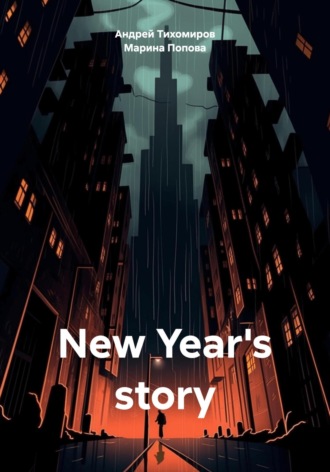
Андрей Тихомиров
New Year's story
Quintflis – fifth (from 44 BC. Julius – July, in honor of Julius Caesar)
Sextllis – sixth (from 8 AD Augustus – August, in honor of the Roman emperor Augustus)
September – September (seventh)
October – October (eighth)
November – November (ninth)
December – December (tenth)
Januarius – January (named after the god Janus, the name of God is associated with the words janus covered passage and janua door; god of doors, entrance and exit, every beginning).
Februarius – February (month of purifications, from februare to cleanse, to make an atoning sacrifice at the end of the year).
Julius Caesar in 46 BC e., on the advice of the Egyptian astronomer Sosigenes, carried out a radical reform of the calendar according to the model adopted in Egypt. A four-year solar cycle was established (365 + 365 + 365 + 366 = 1461 days) with unequal lengths of months, still accepted today: 30 days (April, June, September, November) and 31 days (January, March, May, July, August, October, December), in February – 28 days for three years and 29 days for the fourth year. Caesar moved the beginning of the year to the first of January, since on this day the consuls took office and the Roman economic year began.
The Gregorian calendar, introduced in 1582 under Pope Gregory XIII, corrected most of the remaining differences between the Julian calendar and the solar year.
Several contemporary proposals have been put forward to reform the modern calendar, such as the Universal Calendar, the International Fixed Calendar, the Holocene Calendar, and the Hanke–Henry Permanent Calendar. Such ideas are discussed from time to time, but they fail to gain popularity due to the loss of continuity and massive upheaval that their implementation would entail, as well as their impact on the cycles of religious activity.
Other cultures celebrate their traditional or religious New Year according to their customs, usually (though not always) as they use a lunar or lunisolar calendar. Well-known examples include Chinese New Year, Islamic New Year, Tamil New Year (Puthandu) and Jewish New Year. India, Nepal and other countries also celebrate New Year according to their own calendars, which vary according to the Gregorian calendar.
During the Middle Ages in Western Europe, when the Julian calendar was still in use, authorities moved New Year's Day, depending on the region, to one of several other days, including March 1, March 25, Easter (a nomadic holiday), September 1, and December 25 . Since then, many national civil calendars in the Western world and beyond have switched to using one fixed date to celebrate the New Year, January 1 – most of them have done this by adopting the Gregorian calendar.
January 1: First day of the civil year according to the Gregorian calendar used by most countries. Contrary to popular belief in the West, the civil New Year, celebrated on January 1, is not an Orthodox Christian religious holiday. The Eastern Orthodox liturgical calendar does not provide for the celebration of the New Year. Although the liturgical calendar begins on September 1, the beginning of a new cycle is also not associated with any special religious rites. However, Orthodox peoples can celebrate the New Year as part of civil holidays. Those who adhere to the Revised Julian calendar (which synchronizes dates with the Gregorian calendar), including Bulgaria, Cyprus, Egypt, Greece, Romania, Syria and Turkey, observe both religious and civil holidays on January 1. In other countries and localities where Orthodox churches still adhere to the Julian calendar, including Georgia, Israel, Russia, North Macedonia, Serbia and Montenegro, the civil new year is celebrated on January 1 of the civil calendar, while the same religious holidays are celebrated on January 14 Gregorian (that is, January 1 Julian) in accordance with the liturgical calendar.
Japanese New Year is currently celebrated on January 1st, with the holiday usually celebrated until January 3rd, while other sources state that segatsu lasts until January 6th. In 1873, five years after the Meiji Restoration, Japan adopted the Gregorian calendar. Until 1873, Japan used a lunar calendar in which twelve months consisted of 29 or 30 days, each of which totaled about 354 days. “The bright, colorful, cheerful New Year holiday of the Japanese has always attracted attention. Noting the diversity of New Year's customs and rituals of the Japanese, Russian diplomat Grigory de Vollan at the end of the 19th century. wrote: “Each province celebrates the New Year in its own way, and one could fill a whole book if one were to describe all the characteristic customs of the Japanese people” (Vollan, 1903, p. 176). Indeed, Japan has always been characterized by significant ethnographic diversity, an abundance of local customs and features in all areas of traditional life. This creates certain difficulties when studying any Japanese custom, since all-Japanese characteristics manifested themselves through many local variations. This also applies to New Year celebrations. However, we can assume that already at the end of the Edo era (1603-1868) and especially during the Meiji period (1868-1912), while maintaining local features, a pan-Japanese model of the New Year holiday developed based on the leveling of local rural customs. As for the latter, they are still very diverse in different regions of Japan" (Calendar customs and rituals of the peoples of East Asia. New Year, editors-in-chief: R. Sh. Dzharylgasinova, M. V. Kryukov, Moscow , Main Editorial Board of Oriental Literature of the Nauka Publishing House, 1985, p. 117).
Chinese New Year, also known as the Spring Festival or Lunar New Year, is celebrated every year on the new moon of the first lunar month, around the beginning of spring (Lichun). The exact date may fall any time between January 21 and February 21 (inclusive) according to the Gregorian calendar. Traditionally, the year was marked by one of the twelve Earthly Branches, represented by animals, and one of the ten Heavenly Stems, which correspond to the five elements. This combination repeats every 60 years. This is the most important Chinese holiday of the year. In China, the New Year has been the main, truly national holiday since ancient times – the most solemn, the most joyful, the noisiest and longest. This is how he remains today. However, the external signs of this holiday do not fully reveal its exceptional significance in China. One of the most important, if not the most important, feature of traditional Chinese culture is the emphasis on the organic connection between man and the natural world. For the Chinese, the cycle of world time coincided with the cycle of the seasons, with the eternal cycle of the revival and death of nature. And the New Year marked for them a complete and general renewal of the world, to the point that a child born in the old year after celebrating the New Year was considered to have matured a year. The New Year in China opened a new page in life for everyone, instilling in everyone hope for new happiness. New Year's festivities were therefore not just a time of feasts, amusements and pleasant idleness so different from everyday life, which were expected and remembered the whole year. They reflected in one way or another all aspects of the culture and life of the Chinese – from religious beliefs and family life to economic activity. The custom of celebrating the New Year at the end of winter dates back to ancient times in China. However, the date of the New Year and the forms of festive rituals, of course, did not remain unchanged during the historical development of Chinese civilization. The archaic forms of celebrating the New Year were the Zha and La holidays, the origins of which are lost in the Neolithic cultures of the Yellow River Plain.
Korean New Year is Seollal, or Lunar New Year. Although January 1 is essentially the first day of the year, Seollal, the first day of the lunar calendar, is more significant for Koreans. It is believed that the Lunar New Year celebrations began to bring good luck and ward off bad spirits throughout the year. When the old year ends and the new year begins, people gather at home and sit with their families and relatives, reminiscing about what they did. Since the early Middle Ages, at least two levels have developed in the New Year's holiday rituals of the Koreans: folk and official, which over the centuries have had a significant influence on each other. The customs and rituals of the holiday also reflected its family (or clan) character, as well as the interests of the community. The formation of the multifunctional New Year rituals of the Koreans was influenced by the socio-economic, political, cultural life of the country and people, the ideologies of Buddhism, Confucianism, Taoism and ancient beliefs that retained their strength until the 20th century. In modern and especially modern times, the traditional New Year of the Koreans began to be perceived as one of the brightest forms of manifestation of national culture and as an expression of the ethnic self-consciousness of the people.







